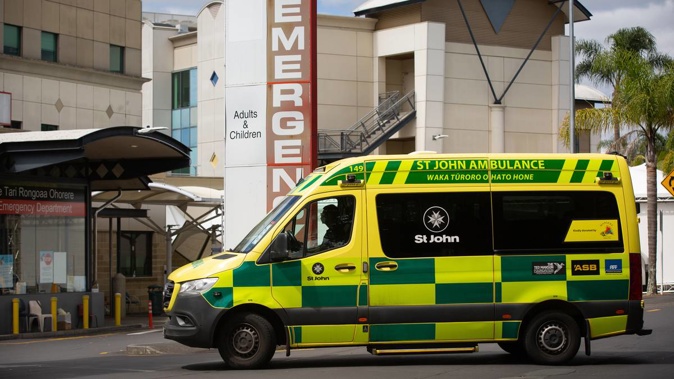
Her life was only a few hours long, but she left a legacy of improved processes around critical care of newborns.
Evana-Jade Anarihi Iro-Tulikaki was born three weeks early on February 27, 2017 at Botany Downs Maternity Unit. She died at Auckland's Middlemore Hospital eight hours and 25 minutes later.
While there was no clear answer about what medically caused her to die, there were issues that contributed to the "utterly tragic" outcome, a coroner has found.
They included aspects of her immediate post-natal care, and the half-hour it took to get an ambulance after staff at the maternity unit initially called the non-emergency 0800 number.
The circumstances could provide a valuable learning tool in midwifery training, in particular in the importance of following the set guidelines, Coroner Erin Woolley said.
Woolley found a number of factors contributed to the baby girl's death:
- The initial temperature of the bath water, at 38C, was too hot;
- Evana-Jade may have got cold in the bath after birth;
- Mother and baby were left alone in the first hour after birth during skin-to-skin, contrary to Ministry of Health Guidelines;
- There were delays in calling an ambulance and when called, a non-urgent 0800 number was rung rather than 111;
- It was not clearly conveyed to St John that there was a life-threatening emergency situation.
After Evana-Jade was born, she was placed on her mother's chest in a birthing pool at the unit.
Mother and baby remained there for about 20 minutes before the mum moved on to a bed to deliver the placenta, still with Evana-Jade on her chest.
The lead maternity carer [LMC] then placed a hat on the baby and got a warm towel for her, and a blanket to put over the pair.
The midwife's continued assessment of Evana-Jade's position and colour revealed no cause for concern, so she left the room briefly to prepare a snack for the parents.
After that, when all appeared well, she left the room again to complete some paperwork.
/cloudfront-ap-southeast-2.images.arcpublishing.com/nzme/KWM4YRNLI3T2V6ME22G7I2XBE4.jpg)
A coroner has found that delays in transferring a newborn to critical care were a factor in the tragic outcome. Stock Photo / 123RF
When the midwife returned, the baby's parents expressed concern that Evana-Jade sounded "wheezy".
The midwife discovered Evana-Jade's skin tone had paled dramatically, and that she appeared to be having trouble breathing.
Staff began resuscitation procedures, and an ambulance was called using an 0800 professional healthcare line.
Almost half an hour later, when no ambulance had arrived, the midwife dialled 111.
About 10 minutes later a neonatal team arrived and took Evana-Jade to Middlemore Hospital, where she was treated in the emergency department before being transferred to the Neonatal Intensive Care Unit in a critical condition.
Around midday, Evana-Jade's parents were advised that further resuscitation efforts were futile. She died soon afterwards.
The post-mortem report noted Evana-Jade's vulnerability due to her gestational age of 37 weeks. It gave two possible reasons for her sudden decline, including respiratory problems linked to persistent pulmonary hypertension but this was unable to be confirmed.
The other possibility was an asphyxial event, which may have resulted from the positioning of Evana-Jade on her mother's chest, wrapped in towels and attempting to feed.
A detailed review by Counties Manukau District Health Board [DHB] into the baby's death noted that Ministry of Health Guidelines were not followed in that mother and baby were left without medical supervision several times in the first hour after birth.
The DHB's review also noted that the information displayed at the maternity unit for calling St John Ambulance Service advised calling the professional 0800 number rather than 111.
This led to the non-urgent phone number being used to initially request an ambulance, potentially delaying the transfer to hospital by up to 26 minutes.
Additionally, there was a miscommunication to St John regarding the type of ambulance required, and the use of jargon such as "air puff" and "baby bus" led to the wrong type of ambulance being sent in the first instance, which was designed to provide patient transfer only and not medical treatment.
The coroner noted the ambulance delay was not the fault of St John, as they responded to the information they were given in the first phone call.
"I appreciate that situations such as the one in this case, are extremely difficult and distressing, however, it is critical that health professionals retain the ability to
clearly communicate the exact nature of the emergency on hand," the coroner said.
She commended St John for its proactive approach in investigating the cause of the delay and making appropriate changes to its operating procedures.
The Counties Manukau Health DHB report into the death listed recommendations including that all midwives and lead maternity carers needed to know about its 2015 guidelines on water immersion during labour and birth.
The DHB said in a response to the coroner that the document was updated in 2019 and was circulated to all women's health clinicians and lead maternity carers.
Counties Manukau DHB now also had guidelines that described the processes and expectations around an emergency transfer from one of its primary birthing units to Middlemore Hospital.
The coroner said because of the action taken by the DHB, it was not necessary to make any further recommendations.
The DHB told Open Justice it would like to offer its sincere condolences to the whānau on the death of Evana-Jade.
"A comprehensive review into the circumstances leading to Evana-Jade's death was undertaken by Counties Manukau Health and this has been acknowledged by the coroner," a spokesperson said.
Take your Radio, Podcasts and Music with you









